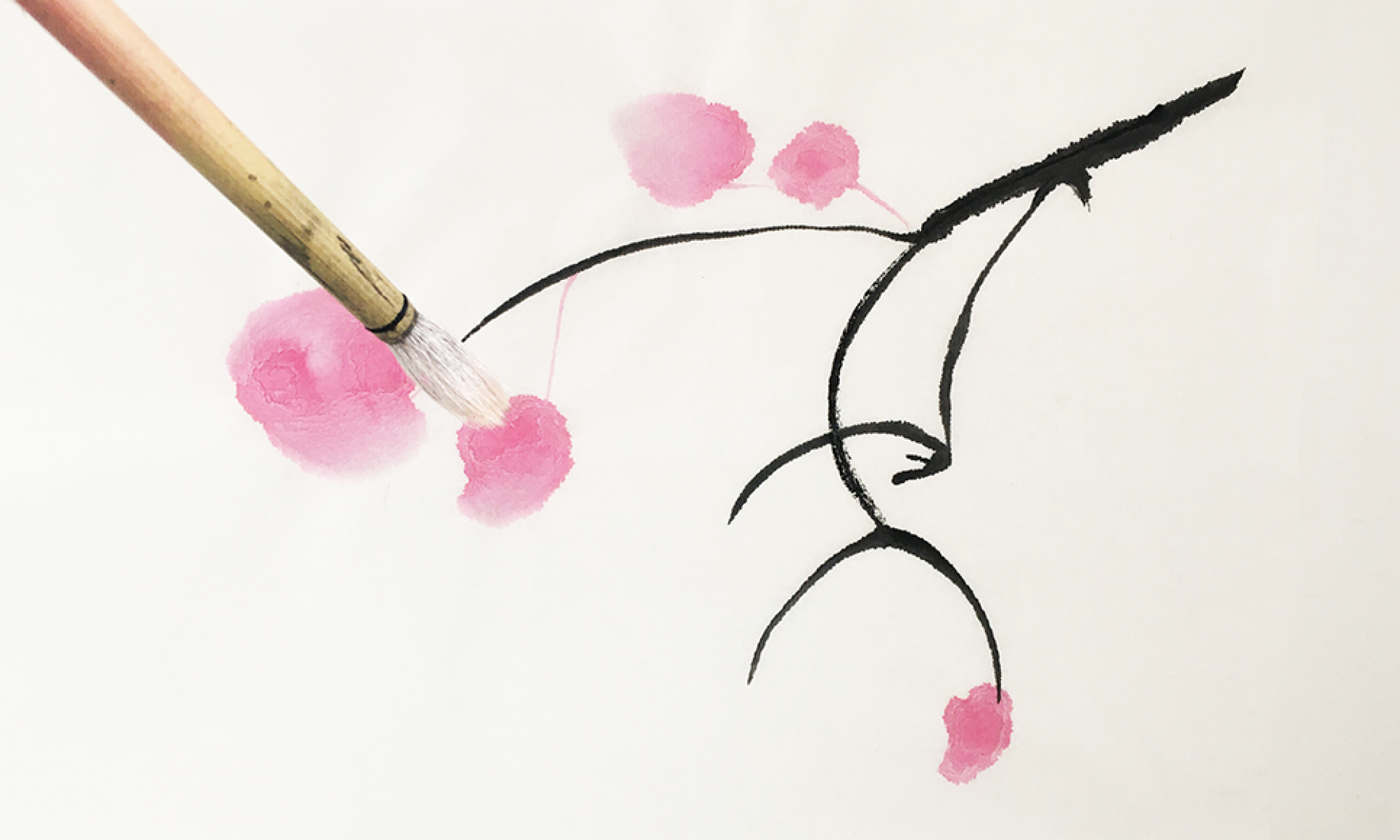I recently heard someone say that yoga wasn’t effective as a spiritual work – instantly I knew that person had not got inside yoga and was speaking purely from outside opinion.
This morning’s ashtanga1 class is started by the teacher gently bringing people back to the top of the mat and reminding us that the first limb of Ashtanga is Yama – which translates as “restraint” or “reigning in” – perhaps a gentler version of commandments.
Alphas
The teacher reminded us of the first Yama. This is ahimsa (non-violence) which can be in action and in thought – and the purpose of the reminder is to participate in the practice (class) non-violently towards ourselves.
It’s a beautiful guidance because Ashtanga (primary series) is physically taxing and partially gymnastic – the classes can attract “alpha” types. And alpha types are used to pushing-through, competing with themselves (and likely others). Anyone who’s done a little self-work or shadow-work will recognise competitiveness as a form of win/lose violence and the self-talk is often not complimentary.
This physical material view of yoga is what the west has done to yoga and earns opinions like in the first paragraph above.
Surrender, Joy, Insight, Stillness
Responding to the sequence’s demands has me oscillating around the edges of coping. In one moment, striving; the next, surrender. Here is where the magic happens – feeling the balance that is needed to be moving and still, to be working and relaxing, to let the breath and gaze (drishti) be the soft guide.
I find myself half-way into the class, nearly bursting into tears of helplessness, laughter2 and joy3 – complete acceptance of the process – endorphins surging and stillness enfolding. Yoga is indeed a spiritual work.
The Inside view of Ashtanga is quite simple: Pattabhi Jois said “Do the practice and all is coming”. Those words speak to the simplicity that you need to find if you want to stick with this particular yoga form.
Approaching Ashtanga (Jois tradition)
Everything about Ashtanga is setup to break you down in that old school kind of way:
- The sequence is the same everyday:
- Youtube yogini’s compete by entertaining you with special variants – not Ashtanga.
- The “westerner mind” rails against the dogmatic adherence, believing its own thinking to be sovereign. But in discipline is freedom, (with practice) you eventually know the next posture – it never-ever changes4.
- With a known sequence, the possibility of “flow” is increased. See Flow below.
- There are no blocks or props – this is you and your breath and the mat – simplicity.
- The teacher’s occasional reminder to relax the jaw, raise the edges of my mouth expose my striving and prideful nature. Small things like jaw tension or a tight wrist are immediate feedback to “where I am”.
- “Soften the breath”, “let the breath guide the movement”, “breath, bhandas, drishti” either from the teacher or from personal experience bring me back. Jois’s contemporary (nemesis?) B.K.S Iyengar’s famous quote “Breath is the king of mind,” is perfect. If we race ahead (pardon the pun) with our head, then synchronization is lost with the breath and the practice is disjointed. [In reality large chunks of my practice, I’m trying to calm everything down with the breath but also the breath adjusts to the physicality. In most classes you don’t hear the ujjayi breath.]
- The Bandhas are a protective (structural) element of the practice – with health and energetic benefits.
- Breath and drishti support the needs of both the sympathetic nervous system (SNS) and the parasympathetic (PNS) supporting meeting the physical demand whilst calming down at the same time.
It’s not submission unless you are too proud. It’s surrender.
Flow
The Csikszentmihalyi definition of flow perfectly fits into fixed sequence of the Jois tradition – looking at the chart, as you work with the sequence, the skills increase and the challenges unfold along the way.
When criticism of “boring” (see below) is levelled at Ashtanga, they are missing the point.

Above I said “oscillating around the edges” – this looks a lot like this flow diagram, the presence of attention is the push and pull of the mind and being – “In one moment, striving; the next, surrender.”
This can be a sacred place
Your awareness is ignited to purely being in the moment, the perfect “fit” of the task and the doing. I can’t be too emphatic about the importance of this place in my/your day – it might be the place where internal dialog has also surrendered.
A Cognitive explanation
Rafe Kelly runs a movement community and system “Evolve, Move, Play”. They are blending nature parkour and “meaning” – inspired by John Vervaeke. Around the 50:00 mark of this rather intellectual talk (you have been warned) he connects the experience of flow and meaning – Vervake proposes the moment of flow is coherence “up and down the stack”5 of your cognitive machinery6. That “flow” is a “fitedness” of the agent-arena relationship. (Vervaeke’s self/world/doing/experiencing model).
And so, in this moment, happens a perfect non-intellectual experience of Buddhism’s “dependent arising” – that in the “doing” of Ashtanga or surfing or hammering a nail – insights that are not thought-based arise. The connection is more important than the subject-object.
I’m not fully across Vervake’s suggestion but my sense is these experiences are bi-directional, up-and-down, round-and-round interplay (feedforward loop) of insights from mental understanding to embodied deeply rooted “knowing”. Vervaeke relates this to the Plato and Socrate’s Anagoge – which translates as “ascent” – that a meaningful life is anagogical and autopoietic.
I think the suggestion is that “Meditation without movement” and “Movement without meditation” are incomplete meaning-making experiences.
Yoga is great, yoga is not all
- As implied by “hammering a nail”, or illustrated by this post or this post – the movement does not need to be on the yoga mat. The agent-arena depth can be found in any given moment – right-here-right-now…let more than “knowing” be the experience:
- Humans in bodies existed a long, long time before “thinking” started
- Children are alive a long time before language and abstract thinking start to take over.
Ashtanga Vinyasa is but one part (asana) of Patanjali’s Ashtanga (8-limbed) system. (Ironically there are only 3 asana related: 2.46-2.48 sutras).
In particular asana is preparation for the final 3 limbs: dharana (concentration), dhyana (meditation) and samadhi (absorption).
The lessons of focus, surrender, breath and dominion over the body (be able to physically sit and also self-awareness of physical twitches, scratches etc) are all meaningful preparations. Drishti also prepares the practitioner for Pratyāhāra (withdrawal from the senses).
Where both practitioners and onlookers do Ashtanga injustice is to allow asana to be the totality of their relationship to the word. That’s the west for you!
Criticism
I’ve outlined the merits of the Jois tradition to create meaningful experiences with me (pardon the dualism). A personal critique is that I also need a diversity of exercise and challenges for this mammalian vehicle and promoting diverse “wiring and firing” of our human neural connections (up and down the stack). Slacklining for example.
For more detailed critique this post by a teacher is much deeper. “Ashtanga’s reputation of being dogmatic, inflexible and hard core” is something you hear a lot.
Jois has also been accused of teacher/student sexual misconduct, acknowledged by his grandson – using a position of power to abuse people is repugnant and raises the reasonable question of whether the system is beneficial in growing better humans.
Notes
1. For the purposes of this post “ashtanga” is “ashtanga vinyasa” in the Jois tradition, except where the Patanjali superset is discussed. I’m not pretending to be some yoga guru (far from it!!!). The post is mostly about direct experience and a novel connection to Vervaeke’s comments on embodiment. I’ve written before about ashtanga vinyasa here.
2. It’s hilarious what goes on in the process of letting go, the resistance and release is ecstatic.
3. I’ve been here before and you can never predict when it will arise, but it will make your day.
4. Today’s teacher guided us to a slightly different pose and asked us to “not report him to the ashtanga police” – he was joking but the adherents can be dogmatic.
5. This is the wrong word, because it’s beholden to our mechanistic cultural conditioning, I just don’t have another word for it right now.
6. Vervaeke asserts 4 types of knowing (propositional, procedural, perspectival and participatory). He is also a member of the 4E cognition academic movement (embodied, embedded, enacted, and extended cognition).


